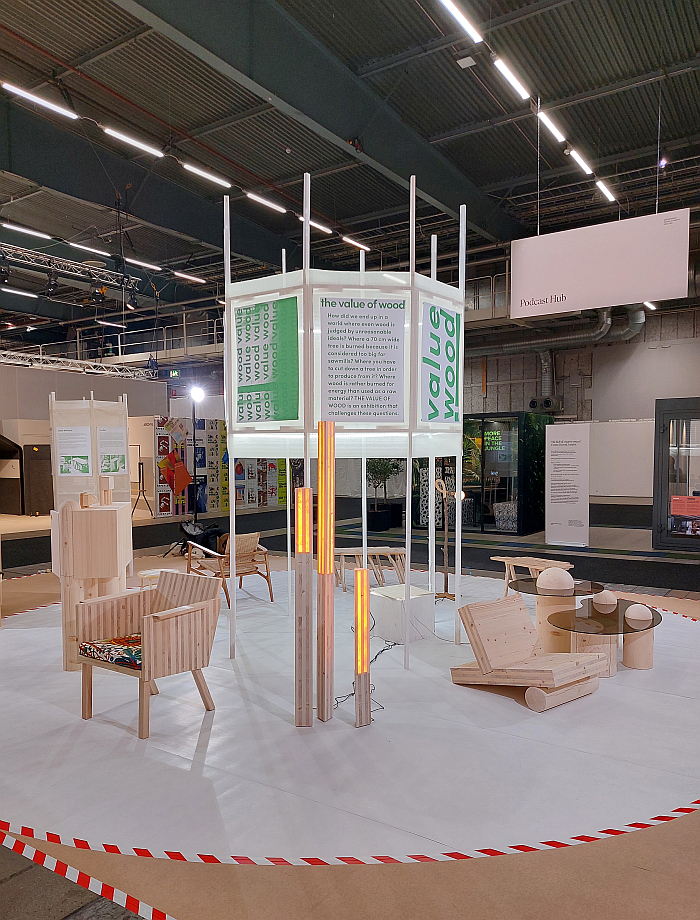
Amongst our reference projects, those projects to which we return whenever the relentless flood of lifestyle, t**** and commerce masquerading as design, being popularly acclaimed as design, pushes us to the edge of an existential crisis, those design projects that revive our spirts and our hopes, remind us that it is all worthwhile and there is a purpose in continuing, is Herbert Hirche's 1953 lounge chair, a work in steel tube and upholstery that not only carries that novel material of the 1920s and 30s Functionalist Modernists into the, marginally, socially more informal and open 1950s, and in doing so helps pave the way for the dismantling of 1920s and 30s social conventions in the 1960s, but also a work whose formal and material reduction, whose efficiency of construction, whose near invisibility, stand diametrically juxtaposed to its strength of character, and welcoming, unassuming, caring approach to all it meets, which is a satisfying reminder of what is important. An important reminder of what we really should move on from.
And a work whose low-down, knees raised, sitting position is exactly what one needed in the 1950s when reading a book, newspaper, magazine, etc and exactly what one needs in the 2020s when using a smartphone, tablet or other mobile digital electronic device: times change quickly, realities change quickly, demands on furniture change slowly, and those furniture objects designed openly and honestly for use rather than dogmatically or egotistically will be the most durable and meaningful going forward, will be most responsive to the changes that will and must come. Just as an open, honest society is better equipped for the future than an egotistical, dogmatic one.
A 1950s work by Hirche that found an echo in the early 1990s in Maarten Van Severen's Low Chair, a work that is but a length of aluminium folded to a location for sitting, and which in the early 2000s version through Kartell became a length of translucent thermoplastic folded to a location for sitting, thus further dematerialising the object, allowing it to dissolve ever more into the space in which it nominally exists.
And a work by Hirche, echoed by Van Severen, which the Offcut Lounge Chair by Marc Hoogendijk, which we found ourself suddenly standing next to in Hall A at Stockholm Furniture Fair, and subsequently found ourselves sitting in, also echoes.
Echoes physically, echoes in terms of sitting position, but otherwise is a very different beast.
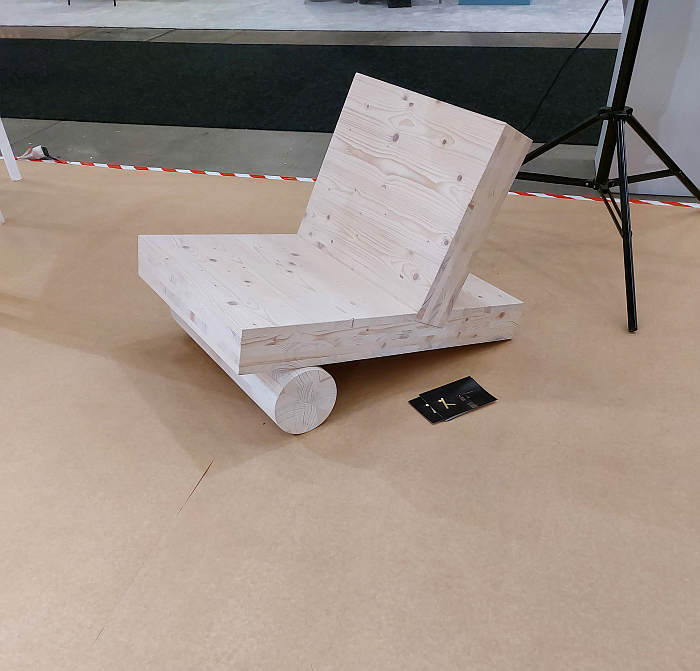
For example, whereas Hirche's low-down lounger is essentially two quadrats set floating in space, a construction that through implying their is no structure bequeaths it a physical and visual lightness, a physical and visual lightness Van Severen achieves through bending a straight line in and over on itself to create a void that draws your attention and implies there is no structure surrounding that void, Hoogendijk's low-down lounger is very much about its structure. A structure composed of two quadrats and a tube, plus an unidentifiable shaped piece, a piece beyond geometry, by way of a construction support.
A structure based on a simple play between two geometries which, and unlike the vast majority of the great many plays with geometry that can be found within Stockholm Furniture Fair 2025, of which there are a great many, isn't contrived; whereas in the great many of the others you can read the artistic intention all to obviously, are instantly clear what was wanted, why it was wanted and how it has been achieved, or put another way there is often a dishonest superficiality at play, with the Offcut Lounge Chair one appreciates Marc wanted a chair. And, given the self-enforced constraints in the project's development, to which we shall come, this was the solution Marc considered most appropriate. And it's very hard to disagree with him
A work which for all its monumentality is a very humble, reserved work, every bit as humble and reserved, an unassuming, as Hirche's, an interesting and instructive comparison, and which, and again as with Hirche, is very happy to expose its construction; that brutalist definition of honesty and openness, and which, in a slightly different context, Alide and Dieter Amick from Rowac argue is an honesty and openness largely missing in carefully crafted Scandinavian wooden furniture, for all as popularly defined by the work of the carpenters of Copenhagen, in which the workings are meticulously hidden. The Offcut Lounge Chair hides nothing. Least of all its material: cross-laminated timber, CLT.
A material which provides us all for as succinct and accessible an entry point to the showcase The Value of Wood as Marc's lounge chair provided us.
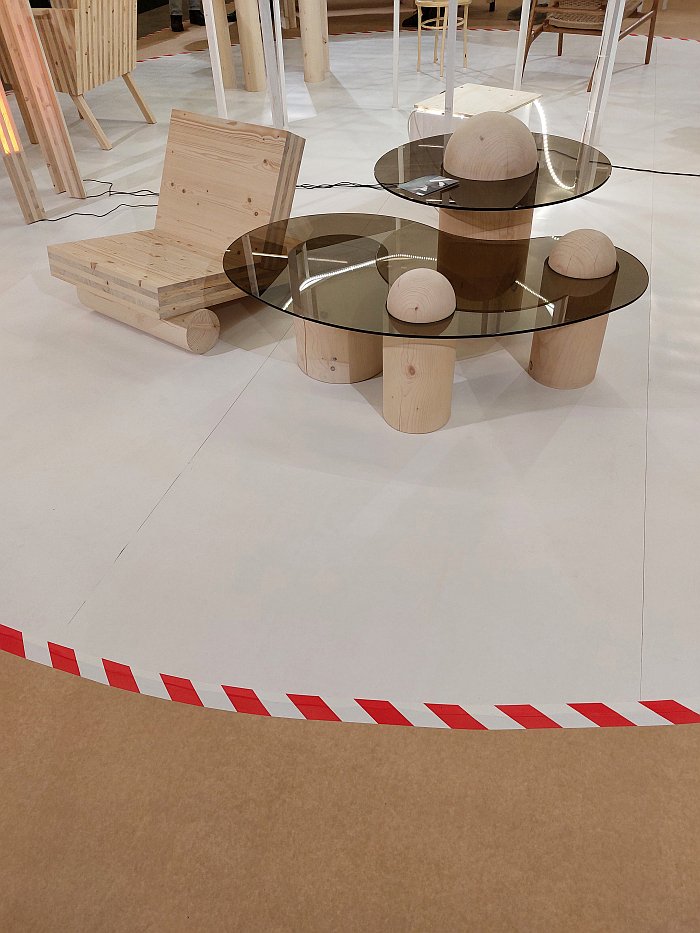
A loose collective of six Swedish based designers The Value of Wood is as much as discourse on the way we use wood as it is a collection of objects, a discourse that is important not least because for all that going forward the development of novel materials is without question important, it is just as important that we learn to better use all the materials we have; that much as a Seneca argues that life isn't short we just waste the greater part of it, so our resources: for all that many of them, may, have an abstract finiteneess that is theoretically infinite, that doesn't mean we can use them wastefully. And in terms of commercial wood and forestry for far too long we've been far too lax, too selfish and egoistic: trees grow, whatever.... yeah. But if we use wood better, less wastefully, not only do we reduce our resource usage elsewhere, become more efficient and less wasteful in other contexts, but we don't need so much sylvan monoculture, which, among other advantages, means that we can have a more interesting landscape that better supports the diversity of flora and fauna and fungi we all rely on, and that we have more land available for the great many other things we need our finite land for.
A discourse on our use of wood, for all in context of the furniture industry, previously referred to in these dispatches through projects such as, for example, Beetlechair by Alexander von Dombois which uses wood stained blue by Ophiostoma fungus in context of Spruce Dieback, wood that is structurally sound but rejected by the furniture industry on account of its light blue colouration; New Sources by Matthias Gschwendtner which uses an array contemporary digital technology to enable branches and other waste wood of contemporary forestry to be a material for furniture; or Jakob Niemann's Branchwood project, a project we first came across in context of the showcase The Series at Vienna Design Week 2023, and which employs branches and roots cut from in situ, living, trees and thereby enabling furniture production without killing the tree. Which, arguably, takes sustainability to a new level.
A Jakob Niemann who is one of The Value of Wood sextet, presenting objects from his Knothole collection which does use wood from harvested trees, but then uses the naturally occurring knotholes, those naturally occurring components that so offend so many consumers of natural wooden furniture, as the point of connection for legs. Legs formed from branches i.e. re-adding branches industry removed. Yes, we can also see a way to make that process more efficient and less invasive. And also two of his Branchwood lamps, specifically floor and table versions; lamps formed from branches, which for all they do have something Hobbit House about them, aren't just for enchanted forests, but for any interior. And works which remind that interesting, meaningful, contemporary furniture can be crafted from the wood industry disregards and rejects.
A reality also very prevalent in the Ingemar cabinet by Li-An-Lo Studio a.k.a. Lina Rex and the Almis lounge chair by Liljeblads Möbelsnickeri a.k.a. William Liljeblad.
The latter a work crafted from wood affected by Dutch Elm disease, the former from wood affected by the aforementioned Spruce Dieback, thus woods that normally aren't used by the furniture industry on account of perceived "problems" caused by disease; "problems" that are only "problems" because of the conventional manner in which wood is graded and approached, by the conventional manner in which wooden furniture is discussed and marketed, by conventional appreciations of a 'perfect' piece of wooden furniture. But which aren't "problems", the wood is sound and waiting to be used.
In addition Lina uses in many of her works, including the Ingemar cabinet, trees rejected by sawmills because they are too large, much as Matthias Gschwendtner uses wood that is, amongst other complaints, too small. In contemporary industrial forestry and sawmilling you either fit in the industries standards, or you're rejected as a "problem". Much like carrots that are rejected by retailers on account of their size or shape, or bananas that lack the correct radius of curvature.
Thus underscoring the real problems are with industry, with commerce and with consumers.
Which brings us back to Marc Hoogendijk and Offcut Lounge Chair in cross-laminated timber, CLT
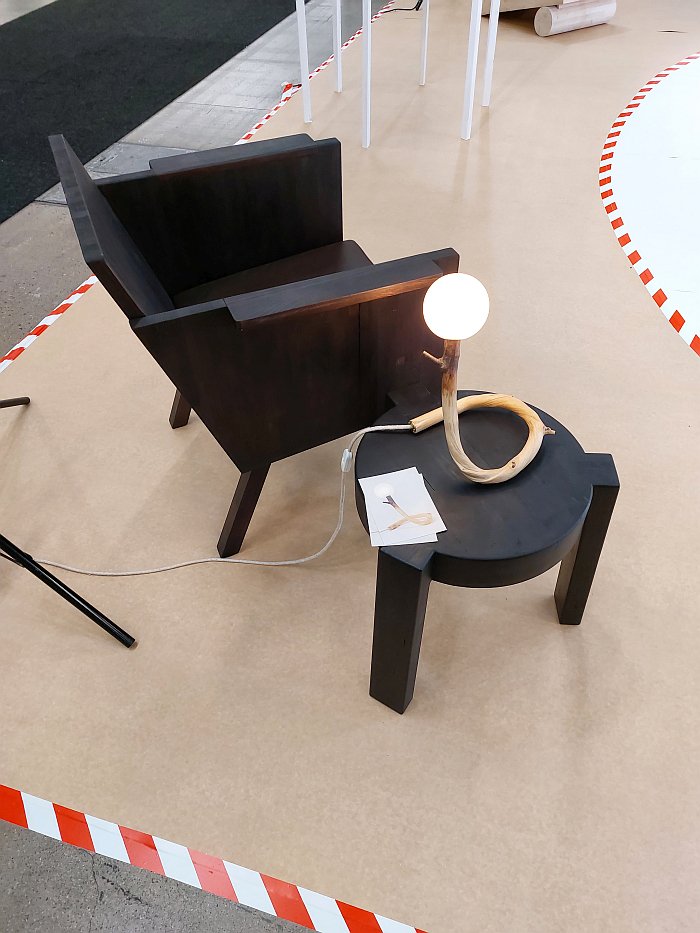
A cross-laminated timber, CLT, which as with steel tube, and aluminium and thermoplastic, is an industrial product, yet whereas in the low-down loungers of Hirche and Van Severen fresh industrial material is and was used, Hoogendijk's low-down lounger employs, as its name implies, offcuts; offcuts from the industrial processing of industrial CLT that are often burned. And with Marc estimating that globally some 6-10% of all CLT becomes offcuts that's an awful lot of perfectly good industrial grade material that could be used to produce objects of daily use meaningful for contemporary society. Or be burned.
Deciding the former was the better option Marc began exploring possible alternatives, of which the Offcut collection is a proposal; and a collection that in addition to the lounge chair also includes a table, bench and three-legged stool that are and were also part of The Value of Wood showcase. An exploration of possibilities with CLT undertaken in conjunction with Sara Szyber who is represented in The Value of Wood by the Reclaim armchair, a work realised from remnants of CLT arising from wooden house construction, primarily when holes are cut in CLT boards for windows and doors, a reminder that just because a house is constructed from wood doesn't mean its automatically light of footprint, it only becomes such when one considers the entire process and its consequences in more detail. And acts appropriately.
And CLT also employed by Karl Ekdahl for Kindeling, a family of floor lamps, which, one presumes, could become a family of lamps of near all types, where the wood glows, as if, well, kindling, with a comforting warming aura; or at least does as best as we could view under the unforgiving glare of Stockholmmesse's lighting. And not a kindling whose glow threatens to burn your house down.
Unlike our current approach to resource usage, souring and processing. Which very much will burn our house down.
Is burning our house down. Whether you admit it or not.
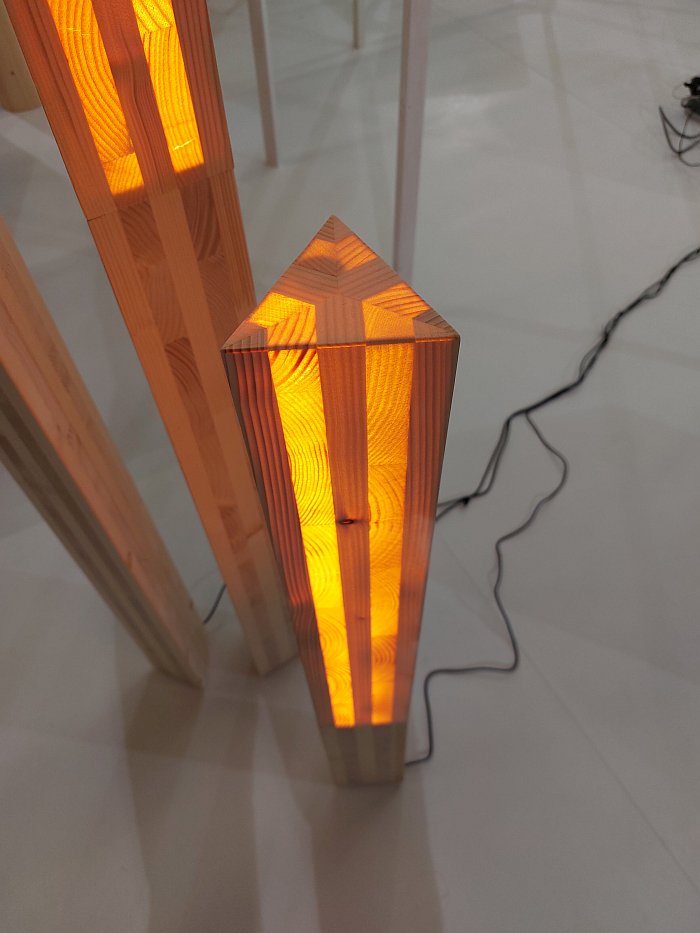
Sustainability is and was a major theme at Stockholm Furniture Fair 2025, talks and special presentations abound, and for years manufactures of all ilks have been keen to extol their sustainability. ¿But can a furniture fair in itself ever be sustainable? ¿Can visiting a furniture fair in a country you don't currently call home ever be sustainable? ¿And what do the certificates most manufacturers rely on to underscore their sustainability actually mean? ¿And how responsive are they? ¿Can they enforce change, or do they reinforce the status quo? ¿How many manufacturers at Stockholm Furniture Fair 2025 are using Ophiostoma fungus infested spruce? ¿How many manufacturers are using elm disease affected wood? ¿How many manufacturers are using wood as the forest provided it?1 ¿How many manufacturers are leaving trees intact? ¿How many manufacturers are employing offcuts? ¿How many manufacturers could be using any one of those woods? ¿How many manufacturers are extolling how 'perfect' their wood is? ¿How many retail buyers are delighting in the manufacturers' 'perfect' wood? ¿What is 'perfect' wood for the furniture industry? ¿What is a 'perfect' carrot? ¿How does the furniture industry assess the value of wood?
¿What is the value of wood?
¿How sustainable is the European furniture industry in 2025, be that in context of production or retail? Yes, more sustainable than it one was, but with a lot of room for improvement. Not just in terms of materials, but in how they are processed, where they are processed, how furniture is supplied, and how furniture is marketed.
Karl Ekdahl, Marc Hoogendijk, William Liljeblad, Jakob Niemann, Lina Rex and Sara Szyber don't have all the answers, but through bringing together their positions, their arguments for wood, for a reassessment of the value of wood in the contemporary and future furniture industry, they enable a very pleasing platform and framework in which to advance an important, and increasingly urgent, discourse. Urgent not least against the background of a global climate change that is going to make questions of wood supply all the more important. And all the trickier.
That the sextet do such in objects that would be engaging, communicative and responsive regardless of material, is a bonus. But, you get the feeling, not a coincidence. Get the feeling all six are more than just reflections on materials.
The Value of Wood Instagram channel can be found @thevalueofwood
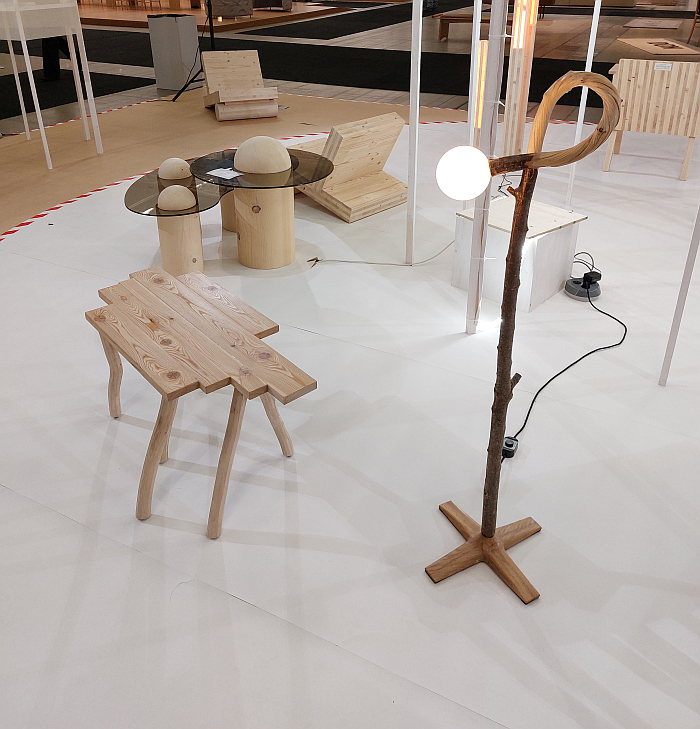
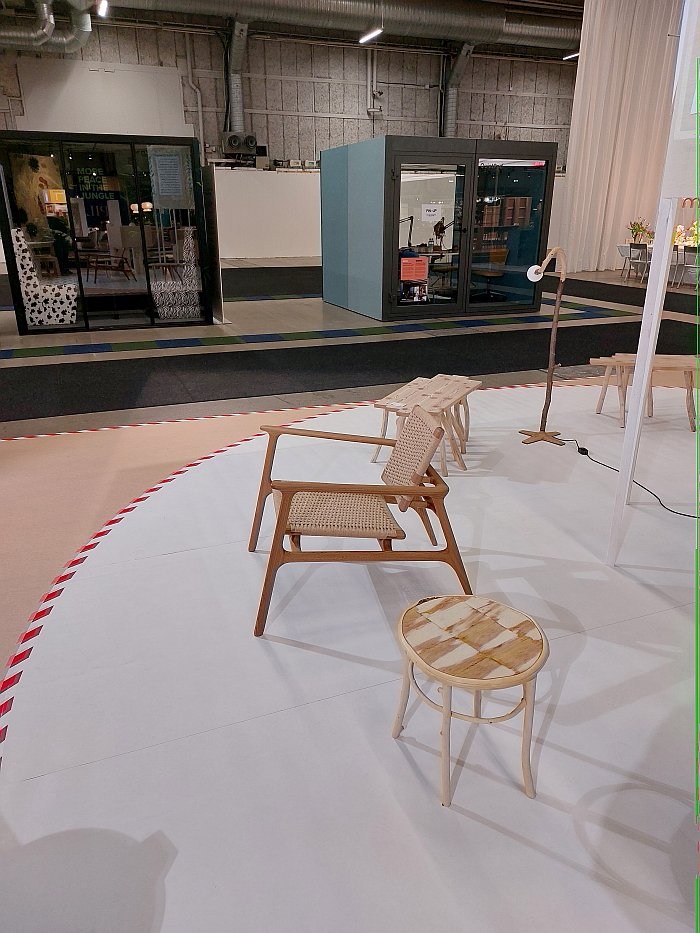
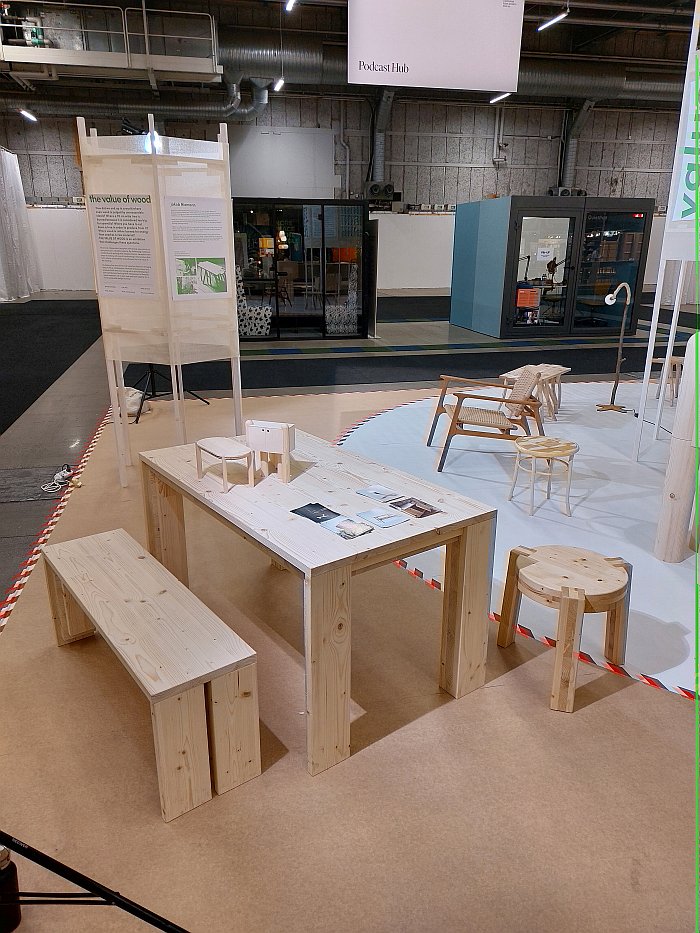
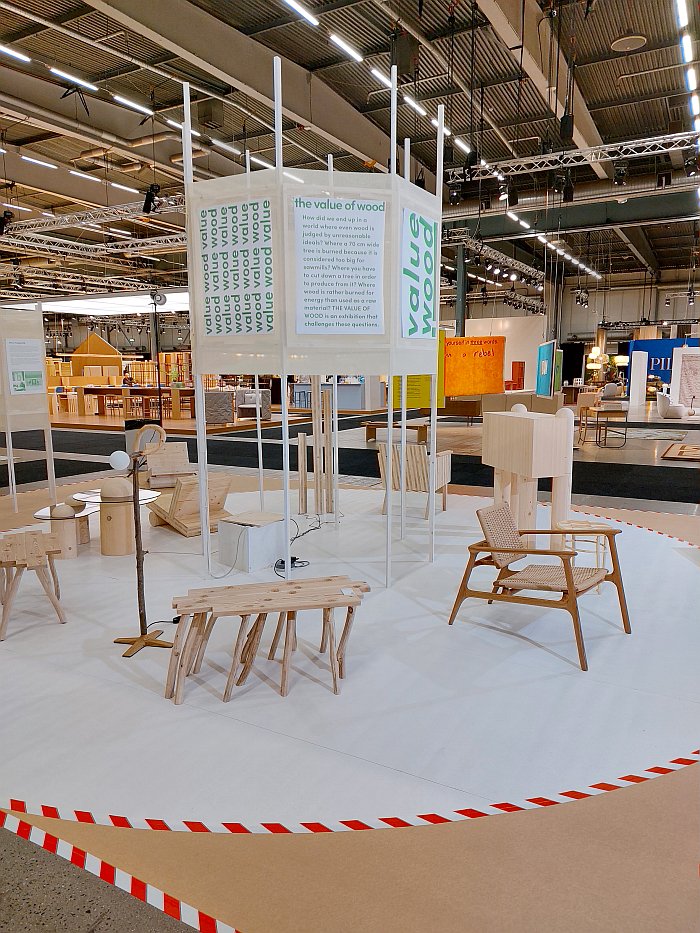
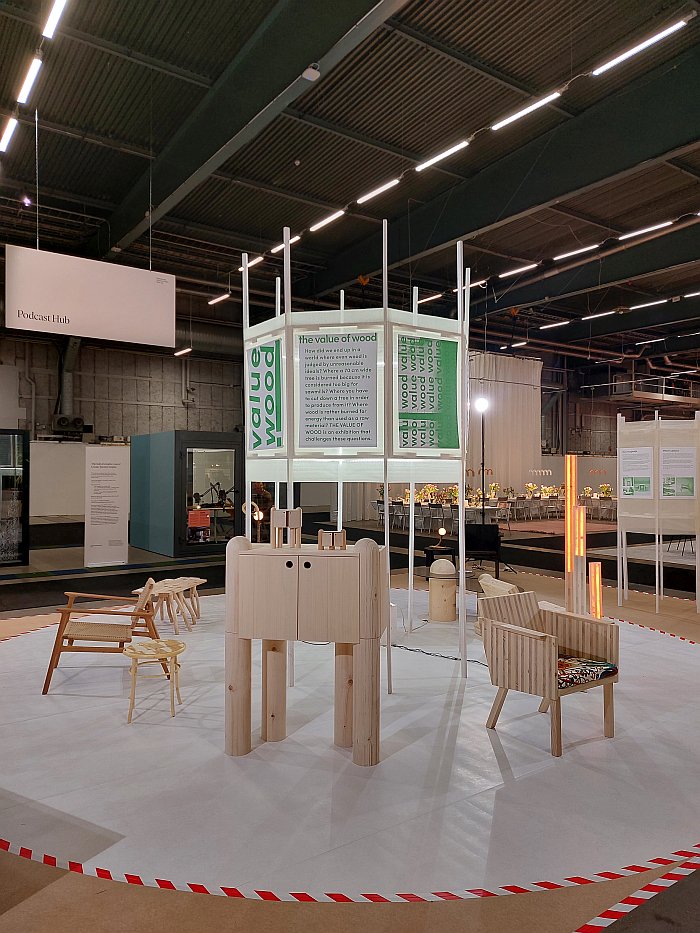
1In the interests of completion and fairness, and extending the discussion, Artek, who were nominally represented at the fair but were primarily at the Vitra/Artek flagship in the city, do produce a selection of their objects in wood that displays those flaws of nature that the industry and we consumers have so long rejected as the so-called Forest Collection, a collection developed in conjunction with design studio Formafantasma. And while not unwelcome, as previously discussed, the question is why not use such "wild birch" a.k.a. birch as standard? We can't imagine there is a shortage of it Finland. That however is a question only Artek can answer, and we, as yet, haven't posed it directly. But, and regardless of such questions, the project is, we'd argue an important step in the right direction. If a very cautious one. One definitely in need of expanding, both wiithin Artek and the furniture industry.